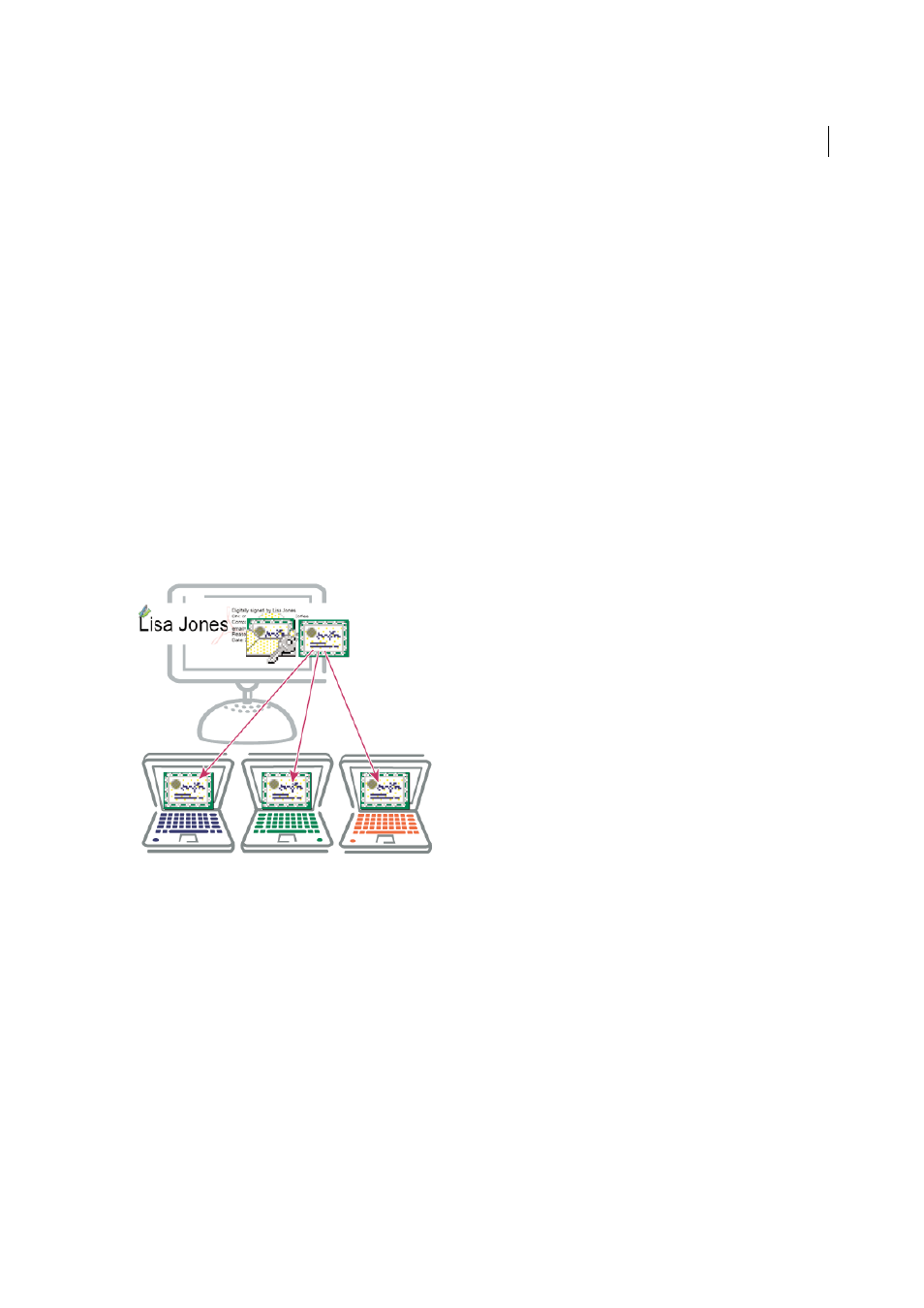Digital ids, About digital ids – Adobe Acrobat XI User Manual
Page 387

380
Security
Last updated 1/14/2015
3
In the JavaScript Security panel, set options to manage JavaScript: as needed.
Enable Acrobat JavaScript
Uncheck to disable JavaScript completely or restrict JavaScript through APIs.
Enable Menu Items JavaScript Execution Privileges
Enables executing JavaScript by clicking menu items. When off,
privileged JavaScript calls can be executed through the menu. Executing non-privileged JavaScript calls through
menu items is not blocked whether this box is checked or not.
Enable Global Object Security Policy
Allows JavaScript globally through APIs, or trusts specific documents
containing JavaScripts.
Alternatively, you can modify your system registry settings to manage JavaScript execution.
For details, see the Application Security Guide at
Digital IDs
Note: For a full list of articles about security, se
About digital IDs
What is a digital ID?
A digital ID is like an electronic driver’s license or passport that proves your identity. A digital ID usually contains your
name and email address, the name of the organization that issued it, a serial number, and an expiration date. Digital
IDs are used for certificate security and digital signatures.
Digital IDs contain two keys: the public key locks, or encrypts data; the private key unlocks, or decrypts that data. When
you sign PDFs, you use the private key to apply your digital signature. The public key is in a certificate that you distribute
to others. For example, you can send the certificate to those who want to validate your signature or identity. Store your
digital ID in a safe place, because it contains your private key that others can use to decrypt your information.
Why do I need one?
You don’t need a digital ID for most of the work you do in PDFs. For example, you don’t need a digital ID to create
PDFs, comment on them, and edit them. You need a digital ID to sign a document or encrypt PDFs through a
certificate.
How do I get one?
